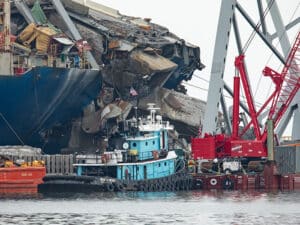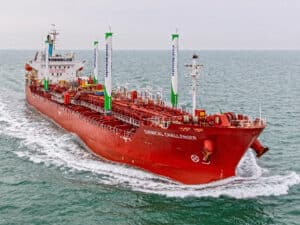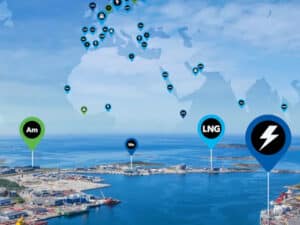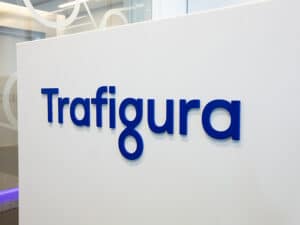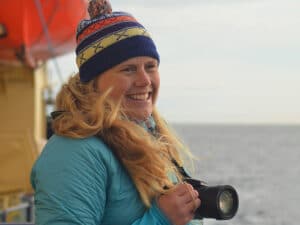
Initiative for Great Lakes-St. Lawrence Seaway green corridor launched
Written by Nick Blenkey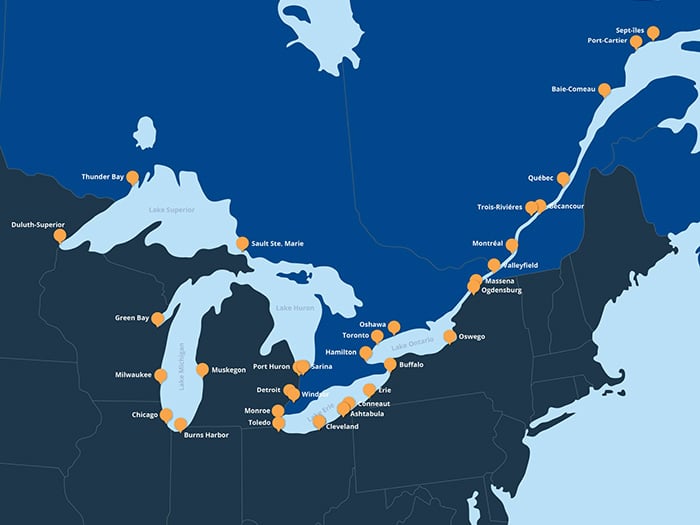
Long green corridor: Great Lakes – St. Lawrence Seaway System extends more than 2,000 miles and contains more than 110 ports. [Image: Duluth Seaway Port Authority]
Green shipping corridor announcements have been coming out of COP27, thick and fast. The plan to launch a green and digital transpacific corridor between San Pedro Bay ports and Singapore looks set to be the first of many. Among many announced yesterday during the World Leaders Summit at COP27, Canada and the United States launched an initiative to facilitate the establishment of a green shipping corridors network in the Great Lakes – St. Lawrence Seaway System.
Under the initiative, the U.S. Department of Transportation, the U.S. Department of State, and Transport Canada will work with state, provincial, local communities, private-sector, non-governmental leaders and indigenous peoples in both countries to host consultations with ports and other stakeholders, with the goal of facilitating the establishment of a Great Lakes Green Shipping Corridor Network.
The binational Great Lakes – St. Lawrence Seaway System is a unique commercial waterway reaching into the heartland of North America, extending more than 2,000 miles and containing more than 110 ports. More than 200 million tons of cargo travel on the waterway each year.
The two governments view the Great Lakes – Saint Lawrence Seaway System Green Shipping Corridor Network Initiative as an important element in catalyzing development of the fuels and infrastructure needed to make the transition to low- and zero-emitting shipping, and, on both sides of the border, creating the jobs to make that fuel available and infrastructure development a reality.
In the future the initiative may expand to support green shipping corridors on U.S. and Canadian routes along both countries’ coasts, leverage experience from similar initiatives in other regions, and supplement regional and global efforts already underway.
MORE IN THE WORKS
According to the U.S. Department of State, at the World Leaders’ Summit, countries, ports, and companies made more than 40 major announcements on issues such as innovations for ships, expansion in low- or zero-emission fuels, and policies to help promote the uptake of next-generation vessels.Those related to green corridors included:
- American Bureau of Shipping (ABS): ABS publication of “Green Shipping Corridors: Leveraging Synergies”
- Australia: Australia-Singapore cooperation on green shipping corridors
- Blue Sky Maritime Coalition and American Bureau of Shipping: Gulf of Mexico green shipping corridor
- Chile: The Chilean Green Corridors Network pre-feasibility study and the general strategy of Maritime Administration to effectively implement IMO instruments
- Finland, Rauma Marine Constructions, Viking Line, and Kempower: Scalable Green maritime transport corridor based on locally produced renewable fuel
- Republic of Korea: collaboration on green shipping corridors
- Los Angeles-Shanghai Green Shipping Corridor Partnership: Los Angeles-Shanghai Green Shipping Corridor partnership and implementation plan
- Mærsk Mc-Kinney Møller Center for Zero Carbon Shipping: Blueprint for green corridors pre-feasibility studies
- Port of Seattle: The Alaska British Columbia Washington Green Cruise Corridor is underway
- United Kingdom: U.K. joins forces with the United States, Norway, and the Netherlands to roll out end-to-end green shipping corridors
- United States: Facilitating green shipping corridors worldwide
- United States: Facilitating U.S. green shipping corridors

